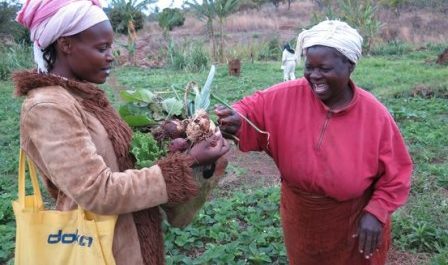
In an otherwise informative article this past Sunday, the New York Times reported on a rural Mozambique without women. Reporting on the “rural poor…left behind”, and pushed around, by multinational mining and natural gas companies and by the national government, the Times mentioned not a single Mozambican woman. In the accompanying slide show, there’s a slide of “people gathered by a river to bathe, play and wash their dishes”. The `people’ are, not surprisingly, all women and girls. Another slide shows, and names, Beatriz Jose, condemned to living in a tent, thanks to the dismal housing provided by the mining companies. And that’s pretty much it.
Where are the women of rural Mozambique? On the farms and in the countryside of Mozambique, the women are everywhere. Study after study has described the relentless feminization of poverty in rural Mozambique. As one study, conducted for the Mozambican government, explains, “The majority of agricultural workers in Mozambique are women and an increasing number of households are being headed by females.” Eighty percent of Mozambique’s population is rural, and 80% percent of rural workers are women. An exceptionally high number of those rural women workers are divorced, separated or widowed. That means a very large numbers of households are headed by single women. The feminization of poverty has been accompanied by the feminization of household headship. At the same time, women farmers have organized into cooperatives and cooperative associations, such as MuGeDe – Mulher, Genero e Desenvolvimento (Women, Gender and Development).
Thanks to labor migration of men, to the HIV and AIDS pandemic, and to women’s organizing on the ground, the lives of women in rural households and in the fields has been constantly changing in Mozambique. Personal and structural, or sectoral, vulnerability has intensified at the same time that women’s formal and informal organizing has intensified. It takes real work to write about rural Mozambique and avoid any mention of women.
And that’s precisely what The New York Times did this weekend.
(Photo Credit: La Via Campesina)
